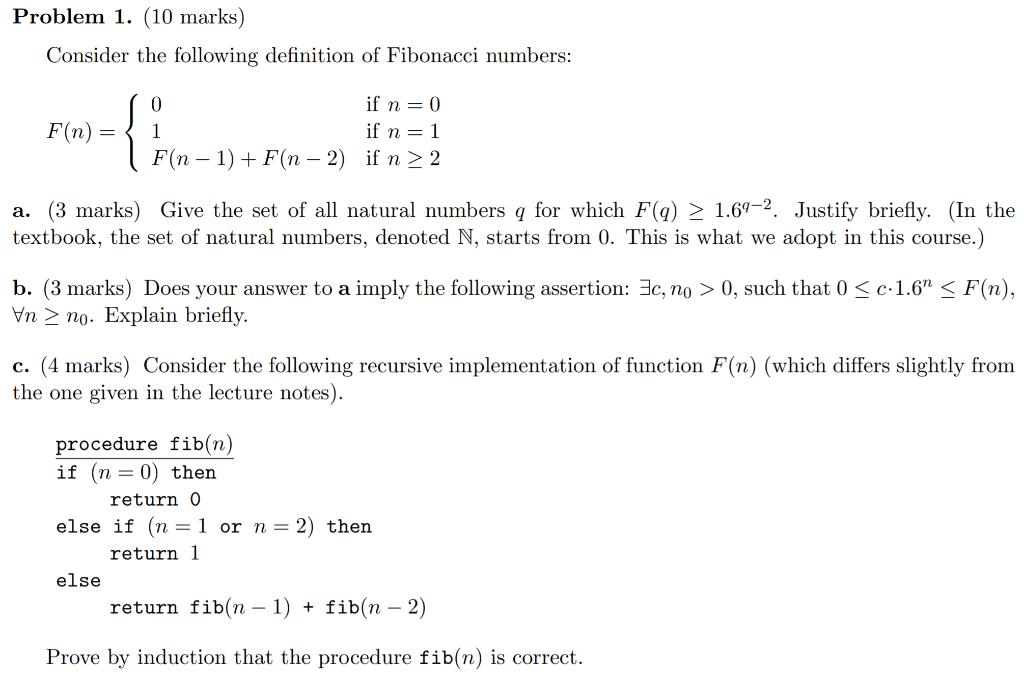Answered step by step
Verified Expert Solution
Question
1 Approved Answer
Problem 1. (10 marks) Consider the following definition of Fibonacci numbers: F(n) = 0 if n=0 1 if n=1 F(n-1) + F(n 2) if n

Step by Step Solution
There are 3 Steps involved in it
Step: 1

Get Instant Access to Expert-Tailored Solutions
See step-by-step solutions with expert insights and AI powered tools for academic success
Step: 2

Step: 3

Ace Your Homework with AI
Get the answers you need in no time with our AI-driven, step-by-step assistance
Get Started


